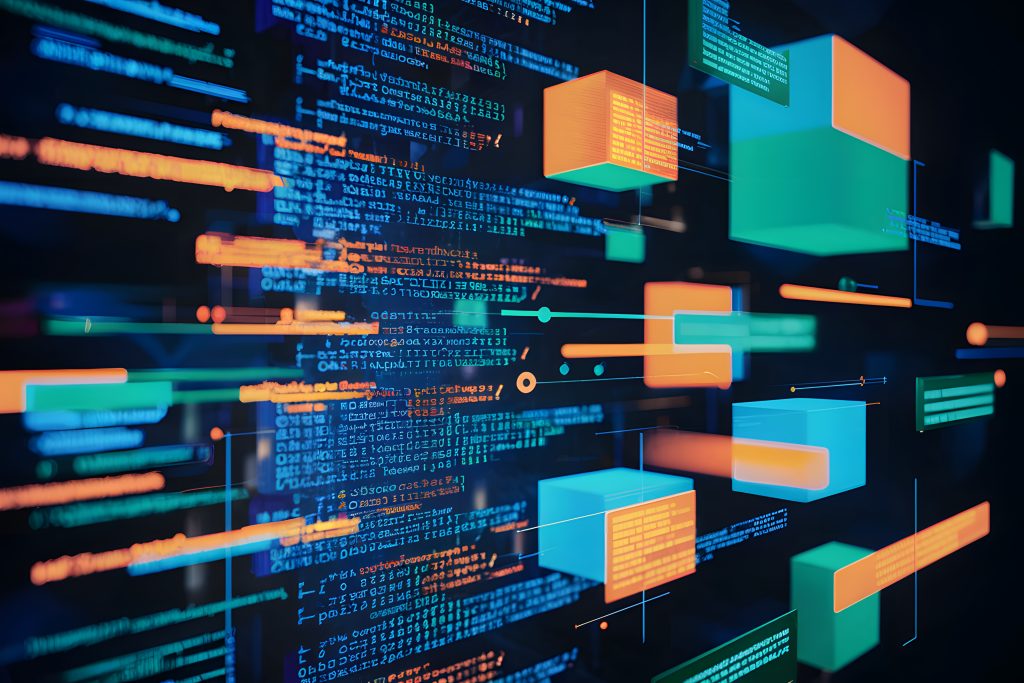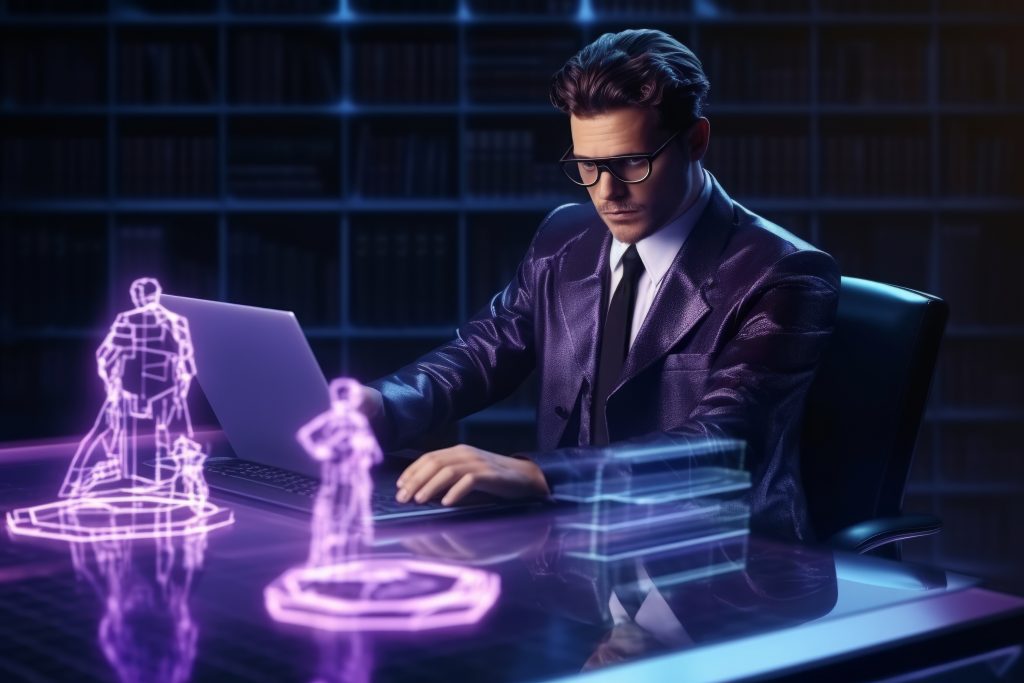As we delve deeper into the 21st century, the rapid evolution of artificial intelligence, especially generative AI (GenAI), is reshaping numerous facets of human life. GenAI’s capabilities in emulating and even surpassing certain aspects of human creativity have sparked a vibrant debate about its implications for the future of creative professions. With GenAI’s ability to produce compelling art, write engaging narratives, and generate functional code, there’s growing concern and curiosity about the role of human creativity in a world where machines can mimic this distinctly human trait. But is human creativity really at risk of becoming obsolete, or are we entering a new era of augmented creativity?
Understanding GenAI
Generative AI tools have been designed to create new content—ranging from text and images to music and software code—based on vast datasets they have been trained on. Notable examples include GPT for text generation and DALL-E for image creation, which have showcased the potential of AI to perform tasks traditionally deemed as creative. These tools not only mimic existing styles but also generate novel content, opening up a plethora of possibilities across various domains.
The Impact on Creative Industries
The influence of GenAI in creative fields is undeniable. The GenAI’s integration is multifaceted and growing. Let’s explore its impact across various roles:
1. Graphic Designing: AI tools can now automate routine aspects of design and help in creating complex visual effects, providing designers with more space to focus on innovative design concepts.
Before AI: Traditionally, graphic designers would manually create every element of 1a design using software like Adobe Photoshop and Illustrator. This process could be time-consuming, requiring extensive effort for revisions and adjustments based on client feedback.
After AI: With AI tools such as Adobe Sensei and more specialized image generation tools like DALL-E or Midjourney, designers can automate routine tasks like resizing and color adjustments and also generate complex images from textual descriptions. These tools enable designers to quickly prototype and iterate on visual concepts, allowing for a dramatic increase in creative possibilities and efficiency. They can also experiment with new styles and visual ideas that may have been impractical or overly time-consuming to explore manually.

2. Video Editing: AI can drastically reduce the time needed for editing by automating cuts, transitions, and effects based on the editor’s style, allowing more time for creative storytelling.
Before AI: Video editors would sift through hours of footage, manually selecting clips and applying transitions and effects. Tools like Adobe Premiere Pro have been staples, requiring detailed manual intervention for each editing decision.
After AI: AI-powered tools like Runway ML enable automatic video editing by analyzing footage and making smart cuts, transitions, and even optimizing the video for different platforms. This automation saves time and allows editors to concentrate on storytelling and creative aspects of video production.

3. Marketing: AI can analyze customer data to generate personalized advertising content, predict trends, and even optimize marketing strategies in real-time.
Before AI: Marketers relied heavily on manual segmentation and trial-and-error methods to target audiences. Campaigns were often designed and revised without real-time data, using platforms like Google Analytics for post-campaign insights.
After AI: With AI platforms like Marketo and HubSpot, marketers can now use predictive analytics to identify customer behavior patterns and personalize marketing at scale. AI helps in real-time decision-making and can dynamically adjust marketing strategies to optimize for engagement and conversion.

4. Coding: In software development, AI can write basic code, test software, and even debug programs, which can speed up the development cycle and let developers focus on more complex problems.
Before AI: Software development involved writing every line of code manually. Developers would spend considerable time debugging and testing software using integrated development environments (IDEs) like Eclipse and Visual Studio.
After AI: Tools like GitHub Copilot use AI to suggest code snippets and entire functions, helping developers write code faster and more efficiently. AI can also help in debugging by suggesting potential fixes and even writing tests, which speeds up the development cycle significantly.

5. Writing and Content Creation: AI can draft articles, scripts, and even books, which can help writers overcome writer’s block and generate ideas more rapidly.
Before AI: Writers and content creators would perform extensive research and write each piece from scratch. Tools like Microsoft Word and Google Docs supported basic writing needs but offered limited assistance in content creation.
After AI: AI writing assistants like OpenAI’s ChatGPT can generate drafts, suggest edits, and even create content based on specified styles or tones. These tools help writers generate ideas, overcome writer’s block, and ensure grammatical accuracy, allowing them to focus on refining their content to better engage their audience.

However, the integration of GenAI in these domains does not signal the end of human creativity. Rather, it marks a shift in the creative process. GenAI acts as a collaborator, not a replacement. It extends the creative capacity of humans, allowing them to explore new artistic territories and conceptual depths.
The increasing use of AI in these fields doesn’t eliminate jobs but rather evolves them. Professionals are required to adapt and learn to co-work with AI, leveraging these tools to enhance their productivity and creativity.
Human Creativity: Irreplaceable Nuances
Human creativity is distinguished by its intricacies and emotional depth. The ability to infuse personal experiences, emotions, and the human condition into art is uniquely human. While GenAI can mimic styles and patterns, it does not possess the consciousness to experience life, which fundamentally shapes artistic expression.
Moreover, creativity involves originality and innovation—traits that are driven by a human’s unique perspective on the world. GenAI operates within the confines of the data it has been trained on, which means it can only remix and reinterpret existing knowledge. Humans, on the other hand, can think abstractly and imagine what has never been conceived.

Collaboration, Not Competition
The future of creativity with GenAI should be viewed as a collaboration. For example, in the film industry, AI can help streamline production processes, manage complex visual effects, and even suggest plot developments based on audience preferences. However, the essence of storytelling, character development, and emotional engagement remain distinctly human tasks.
Artists, writers, and other creatives are beginning to use AI as a tool to enhance their work rather than replace it. This partnership allows for more time and energy to be spent on the more nuanced aspects of creative work.

The Evolving Role of Human Creativity
As we navigate the implications of GenAI in creative fields, it’s essential to redefine the role of human creativity. It’s not about competing with AI but leveraging its capabilities to enhance human expression and innovation. Education and training will need to adapt, focusing on cultivating creativity, critical thinking, and emotional intelligence—skills that are crucial in a technology-driven future.
- Enhanced Collaboration: Humans will need to collaborate with AI, using it as a tool to extend their creative expression.
- Focus on Soft Skills: Skills like critical thinking, empathy, and emotional intelligence will become more valuable as they are irreplicable by AI.
- Lifelong Learning: Continuous learning and adaptation to new tools and technologies will be essential for staying relevant in creative fields.
- Innovation Beyond AI’s Reach: Exploring areas where AI still lags, such as abstract and strategic thinking, to create groundbreaking work.
Conclusion
The notion that GenAI will make human creativity obsolete is more myth than reality. Instead, GenAI is becoming a powerful ally in the creative process, enhancing human capabilities and freeing up time for higher-level creative and strategic thinking. As we navigate this partnership, the future of creativity is poised to be more diverse, inclusive, and prolific than ever before. Far from being obsolete, human creativity is set to reach new heights, complemented by the extraordinary capabilities of GenAI.



